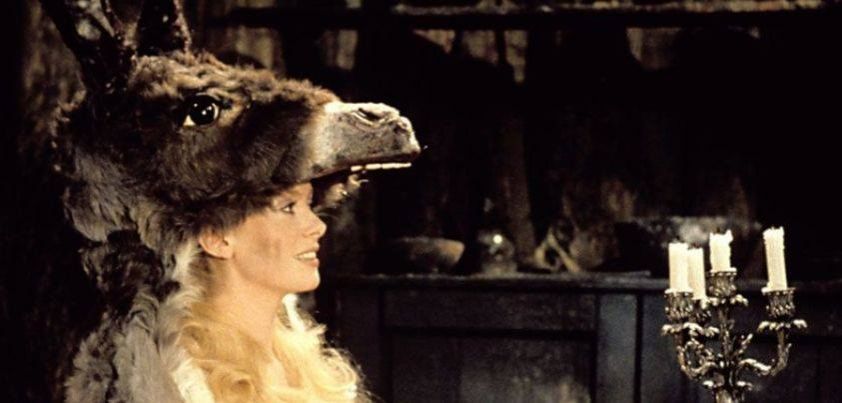 The lessons taught by many folktales are just as important today as they were hundreds of years ago. Donkey Skin deals with sexual abuse in the form of incest between father and daughter. A powerful king wants to marry his daughter, as this is the only way he can keep a promise he made to his dying wife. Fortunately, the brave girl has other ideas. I find it interesting that the story makes it clear that the king’s actions are wrong, but seems to have no problem with a handsome prince who spies on women through key holes. More…
The lessons taught by many folktales are just as important today as they were hundreds of years ago. Donkey Skin deals with sexual abuse in the form of incest between father and daughter. A powerful king wants to marry his daughter, as this is the only way he can keep a promise he made to his dying wife. Fortunately, the brave girl has other ideas. I find it interesting that the story makes it clear that the king’s actions are wrong, but seems to have no problem with a handsome prince who spies on women through key holes. More…
Archives
The Master Cat; or, Puss in Boots
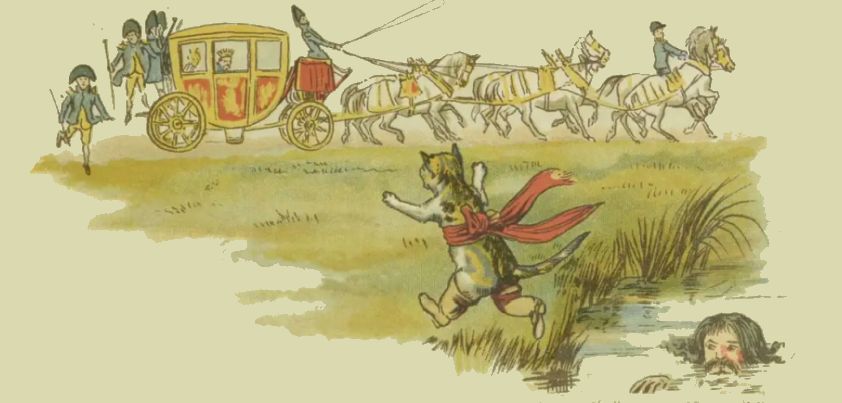 Puss in Boots is sometimes criticized for the mixed message it sends to children. Derived from a 14th Century Italian folktale, a clever cat helps its slow-witted master win the heart of a princess through trickery, lies, threats and theft. To condemn the story because of this seems a little unfair, since folklore is full of likeable tricksters whose crimes are far worse than the cat’s. These characters often play an important role, challenging traditional beliefs through satire. Here, the cat’s actions show up both the greed and gullibility of the king and the shallowness of his daughter. More…
Puss in Boots is sometimes criticized for the mixed message it sends to children. Derived from a 14th Century Italian folktale, a clever cat helps its slow-witted master win the heart of a princess through trickery, lies, threats and theft. To condemn the story because of this seems a little unfair, since folklore is full of likeable tricksters whose crimes are far worse than the cat’s. These characters often play an important role, challenging traditional beliefs through satire. Here, the cat’s actions show up both the greed and gullibility of the king and the shallowness of his daughter. More…
Bluebeard
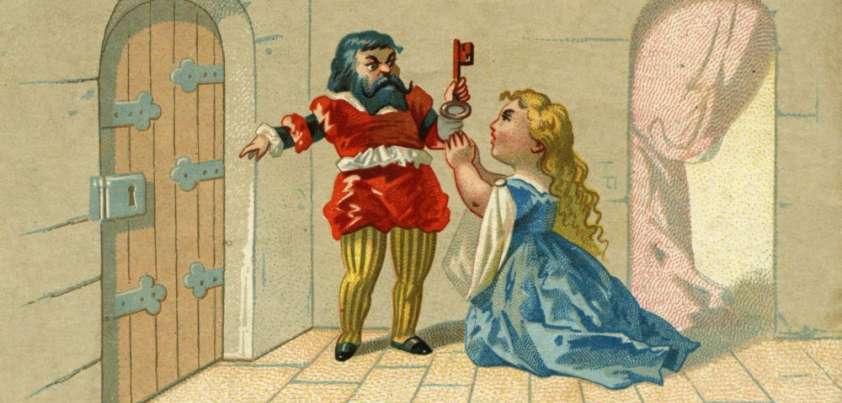 As in real life, many folktales have protagonists who attain riches and/or happiness by questionable means. Bluebeard, Charles Perrault’s serial killing nobleman, obviously deserves his fate. However, it is also hard to see how his last wife, who first rejected him based on his looks, seemingly only married him for his riches, and then betrayed his generosity and trust by entering a forbidden room, deserves a “happily ever after” future. Themes include judging by appearances, greed, vanity, betrayal of trust and justice. One question remains: if the beard made women and girls run away, why didn’t Bluebeard shave it off? More…
As in real life, many folktales have protagonists who attain riches and/or happiness by questionable means. Bluebeard, Charles Perrault’s serial killing nobleman, obviously deserves his fate. However, it is also hard to see how his last wife, who first rejected him based on his looks, seemingly only married him for his riches, and then betrayed his generosity and trust by entering a forbidden room, deserves a “happily ever after” future. Themes include judging by appearances, greed, vanity, betrayal of trust and justice. One question remains: if the beard made women and girls run away, why didn’t Bluebeard shave it off? More…
Toads and Diamonds (The Fairies)
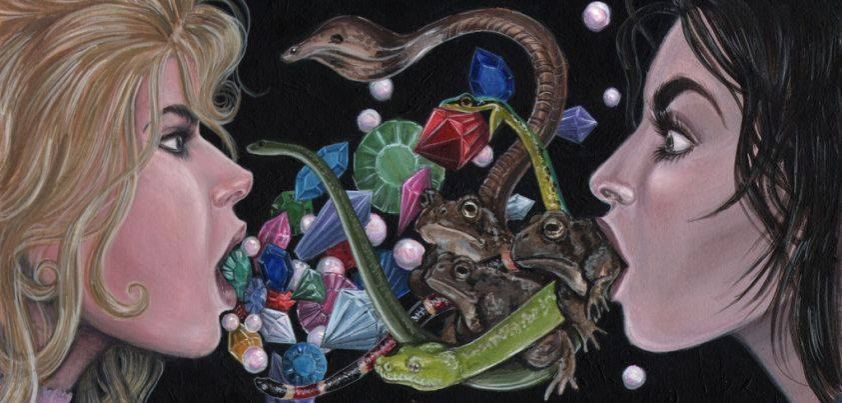 This story from Charles Perrault is about a bad-tempered, greedy widow and her two daughters. One girl is selfish, rude and ugly but loved by her mother. The other girl is kind, polite and beautiful but treated badly. With the help of a fairy (who else?), the kind daughter marries a prince and the selfish daughter dies alone. The story leaves readers wondering about the fairy’s gift. Life would be miserable (and maybe impossible) if something fell from your mouth every time you opened it? Also, did the prince really marry her out of love, or was it for diamonds? More…
This story from Charles Perrault is about a bad-tempered, greedy widow and her two daughters. One girl is selfish, rude and ugly but loved by her mother. The other girl is kind, polite and beautiful but treated badly. With the help of a fairy (who else?), the kind daughter marries a prince and the selfish daughter dies alone. The story leaves readers wondering about the fairy’s gift. Life would be miserable (and maybe impossible) if something fell from your mouth every time you opened it? Also, did the prince really marry her out of love, or was it for diamonds? More…
Sleeping Beauty
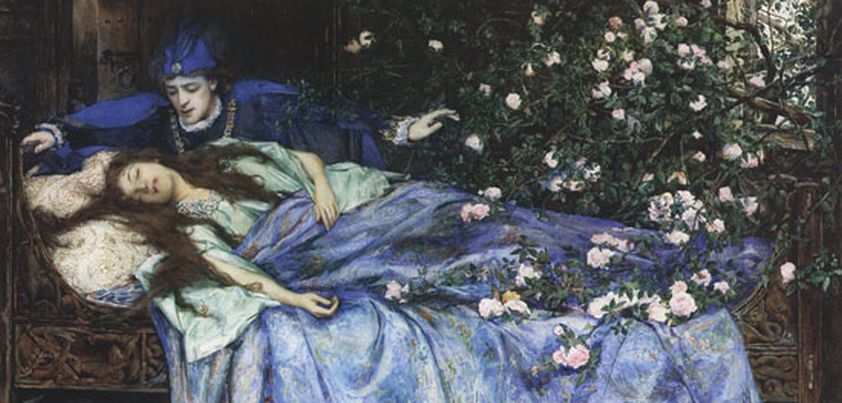 Today we have a reverse chronology of the folktales behind the classic children’s story, Sleeping Beauty. The famous kiss that woke the princess comes from the Brothers Grimm’s Briar-Rose (1812). Charles Perrault’s Sleeping Beauty in the Wood (1697) has no kiss but lots of talk, a hasty wedding followed by a night of “very little sleep”, and an added section where the prince’s mother (an Ogress) decides to make a meal of their children. Perault’s inspiration was the Giambattista Basile’s Sun, Moon and Talia (1634). Here, the king “gathers the first fruits of love” (rapes) the poor unconscious girl. More…
Today we have a reverse chronology of the folktales behind the classic children’s story, Sleeping Beauty. The famous kiss that woke the princess comes from the Brothers Grimm’s Briar-Rose (1812). Charles Perrault’s Sleeping Beauty in the Wood (1697) has no kiss but lots of talk, a hasty wedding followed by a night of “very little sleep”, and an added section where the prince’s mother (an Ogress) decides to make a meal of their children. Perault’s inspiration was the Giambattista Basile’s Sun, Moon and Talia (1634). Here, the king “gathers the first fruits of love” (rapes) the poor unconscious girl. More…
Little Red Riding Hood
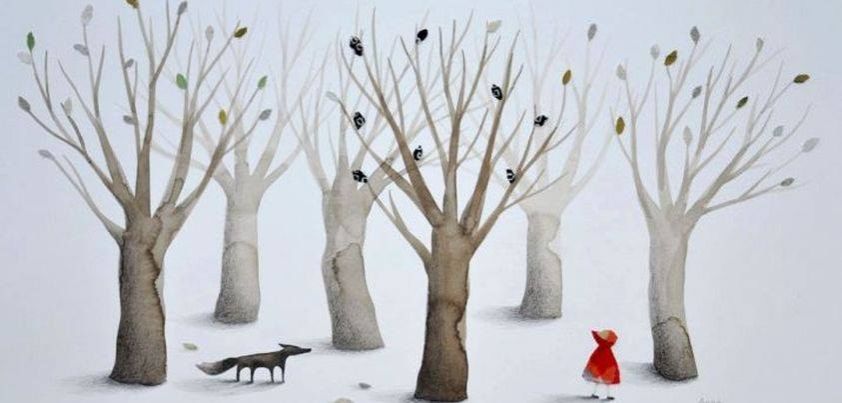 This time last year we featured Charles Perrault’s famous interpretation of an ancient folktale, Cinderella. Today we have another well-known Perrault story, Little Red Riding Hood. The version of the story most commonly told today is from a Brothers Grimm adaption known as Little Red Cap, published over 100 years after Perrault. In both versions, Red is punished for talking to strangers (the wolf) by being “eaten”. The Brothers extended the story to make it more appealing to children. In addition to Red and her grandmother miraculously surviving in the wolf’s stomach, they later meet and kill a second wolf. More…
This time last year we featured Charles Perrault’s famous interpretation of an ancient folktale, Cinderella. Today we have another well-known Perrault story, Little Red Riding Hood. The version of the story most commonly told today is from a Brothers Grimm adaption known as Little Red Cap, published over 100 years after Perrault. In both versions, Red is punished for talking to strangers (the wolf) by being “eaten”. The Brothers extended the story to make it more appealing to children. In addition to Red and her grandmother miraculously surviving in the wolf’s stomach, they later meet and kill a second wolf. More…
Cinderella
 Cinderella, perhaps the world’s best-known children’s story, has its origins in folklore. The version immortalized by Disney was first published in Charles Perrault’s 1697 book Stories or Tales from Times Past, with Morals, also known as Tales of Mother Goose. (Yes, Mother Goose was a man!) There are said to be over 1,000 variants of the story across the world. Perrault took the original framework, which has been around since the days of the pharaohs, and added the three elements for which his version is famous today: a fairy godmother, a pumpkin-carriage, and glass slippers. More…
Cinderella, perhaps the world’s best-known children’s story, has its origins in folklore. The version immortalized by Disney was first published in Charles Perrault’s 1697 book Stories or Tales from Times Past, with Morals, also known as Tales of Mother Goose. (Yes, Mother Goose was a man!) There are said to be over 1,000 variants of the story across the world. Perrault took the original framework, which has been around since the days of the pharaohs, and added the three elements for which his version is famous today: a fairy godmother, a pumpkin-carriage, and glass slippers. More…